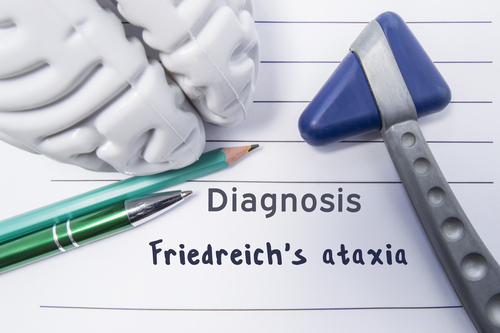A Friedreich’s Ataxia Explainer

Describing a progressive genetic disease like Friedreich’s ataxia (FA) is difficult. It has a wide range of symptoms, most of which are unique to FA and not easily understood unless you have firsthand experience or a loved one with the condition. In this column, I will address some questions I’ve received about FA over the years.
Disclaimer: I am not a doctor. Each patient progresses differently and experiences FA symptoms to varying degrees. This column is based on my own experience with the disease, what I’ve learned from friends with FA, and my own research, including information I’ve found on the Friedreich’s Ataxia Research Alliance (FARA) website.
What causes FA?
FA is genetic. I received a faulty recessive gene from both of my parents. The condition is caused by a communication error in the central nervous system. Our cells, which get their road map from our DNA, don’t replenish and rebuild correctly because they lack the energy-producing protein frataxin. Our central nervous system can’t communicate effectively with our bodies and we become less coordinated as the damaged cells begin to outnumber the healthy cells.
Discuss the latest research in the Friedreich’s Ataxia News forums!
What does progressive mean?
Progressive means becoming more affected over time. FA usually reveals itself when you realize that you are less coordinated than your peers. Although a few patients have started their journey with a diagnosis of scoliosis or cardiomyopathy, doctors usually get to a FA diagnosis by seeking an explanation for a presentation of symptoms. Unfortunately, once you start displaying signs, they are likely to worsen with time and new symptoms will probably emerge. Progression differs from patient to patient.
What determines your FA progression?
Some contributing factors can help to predict or explain your FA progression. The two main factors are GAA repeats and your age of onset. The GAA repeat is a section of DNA. Healthy people who don’t have FA have around 30 or 40 repeats on each DNA strand. FA patients have anywhere from 66 to over 1,000. This gene mutation inhibits the production of frataxin. Generally, the more repeats you have, the more affected you are with the disease. Age of onset can also predict progression of FA. Most FA patients start to show symptoms between the ages of 5 and 18. Adult, or late onset FA, is less common and occurs in less than 25 percent of diagnoses. Typically, the earlier the onset, the faster the progression, and the more severe the symptoms.
What parts of your body are affected by FA?
FA affects motor skills, which are the actions and movements of the muscles. Gross motor skills involve the arms, legs, and other large body parts, and fine motor skills involve the wrists, hands, fingers, feet, and toes. Problems with walking, running, and activities such as catching and throwing are usually the first signs of FA. Other tasks like handwriting, brushing hair and teeth, cutting food, and swallowing are often affected.
What other symptoms do FA patients have?
Almost all of those with FA experience chronic fatigue; other symptoms include slow and slurred speech, scoliosis, cardiomyopathy, diabetes, hearing loss, body aches and cramps, and vision impairment. The good news is that our cognitive abilities are not affected.
Why do FA patients use walking aids?
Many FA patients use walking aids such as rollators, canes, walking frames, and even service dogs. We use these aids to conserve our energy and to provide stability to prevent falls.
When do FA patients need to use scooters or wheelchairs?
It depends on your specific progression of symptoms. FA patients typically begin to use a wheelchair when daily functions become too difficult and unsafe, even with a walking aid. This decision is usually made with the advice of your doctor.
Is there a treatment for FA?
Unfortunately, there are no treatments available that are designed specifically for FA. Individual FA symptoms can be managed with treatments such as spinal correction devices and surgery, insulin, and cardio treatments. Clinical trials taking place worldwide to find a treatment or cure for FA are showing promising results. To find out more, visit the FARA website.
***
Friedreich’s Ataxia News is strictly a news and information website about the disease. It does not provide medical advice, diagnosis or treatment. This content is not intended to be a substitute for professional medical advice, diagnosis, or treatment. Always seek the advice of your physician or another qualified health provider with any questions you may have regarding a medical condition. Never disregard professional medical advice or delay in seeking it because of something you have read on this website.








TRINITY FALK
Great article! Thanks!